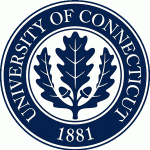 Although the department was not able to celebrate with an awards banquet this year, we still are able to recognize the best among undergraduate and graduate students, as well as faculty! This year’s award recipients are:
Although the department was not able to celebrate with an awards banquet this year, we still are able to recognize the best among undergraduate and graduate students, as well as faculty! This year’s award recipients are:
Undergraduate Awards
Economics Department General Scholarship
Yulia Bragina
Tyler DiBrino
Kevin Fiddler
Melissa Mendez
Sueing Ngov
Shannon O’Connor
Gabriela Rodriguez
Kathryn A. Cassidy Economics Scholarship
Kelly-Anne Moffa
Katelyn Mooney
Rockwood Q. P. Chin Scholarship
Kevin Fiddler
Devin Pallanck
Gabriela Rodriguez
Yumeng Shao
Louis D. Traurig Scholarship
Marisa Infante
Spencer Kinyon
Linge Yang
Ajshe Zulfi
Albert E. Waugh Scholarship
Xiaofeng Gong
Paul N. Taylor Memorial Prize
John Peterson
Julia & Harold Fenton and Yolanda & Augustine Sineti Scholarship
Tyler DiBrino
Charles Triano Scholarship
Tiffany D’Andrea
James Rice
Dr. Joseph W. McAnneny Jr. Scholarship
Madeline Danziger
Zian Zhang
Robert J. Monte Scholarship
Luis Cruz
Ross Mayer Scholarship
Michelle Grieco
Mary Vlamis
Graduate Awards
W. Harrison Carter Award
Lindsey Buck
Abraham Ribicoff Graduate Fellowship
Yangkeun Yun
Timothy A. and Beverly C. Holt Economics Fellowship
Yijia Gao
Xuejian Gong
Ruohan Huang
Ha Kyeong Lee
Wensu Li
Miranda Mendiola Valdez
Ziyun Wu
Economics Department General Scholarship
Jingyun Chen
Chun Li
Jinning Wang
Heli Xu
Best Third Year Paper Award
Erdal Asker
Deepak Saraswat
Graduate School Pre-Doctoral Fellowship
Treena Goswami
Huarui Jing
Anastassiya Karaban
Xizi Li
Shilpa Sethia
Rui Sun
Jiaqi Wang
Wei Zheng
Faculty Awards
Grillo Family Research Award
Jungbin Hwang
Grillo Family Teaching Award
Delia Furtado
Congratulations to everyone!

 Based on his research of the impact of the 2009 H1N1 pandemic, Professor Jorge Agüero has published two op-eds for Peruvian outlets on the economics of the Covid-19, how it could affect the Peruvian economy and the role of public policies to reduce the impact of the pandemic.
Based on his research of the impact of the 2009 H1N1 pandemic, Professor Jorge Agüero has published two op-eds for Peruvian outlets on the economics of the Covid-19, how it could affect the Peruvian economy and the role of public policies to reduce the impact of the pandemic. On February 27, 2020, two Economics students from the Storrs campus (Daija Brunson and Pershae Gilling) and one Economics student from the Stamford campus (Viviana Castillo) got the chance to travel to Cleveland, OH, for a Women in Economics Symposium. In the morning of the event the students got the chance to meet Research Assistants for the
On February 27, 2020, two Economics students from the Storrs campus (Daija Brunson and Pershae Gilling) and one Economics student from the Stamford campus (Viviana Castillo) got the chance to travel to Cleveland, OH, for a Women in Economics Symposium. In the morning of the event the students got the chance to meet Research Assistants for the